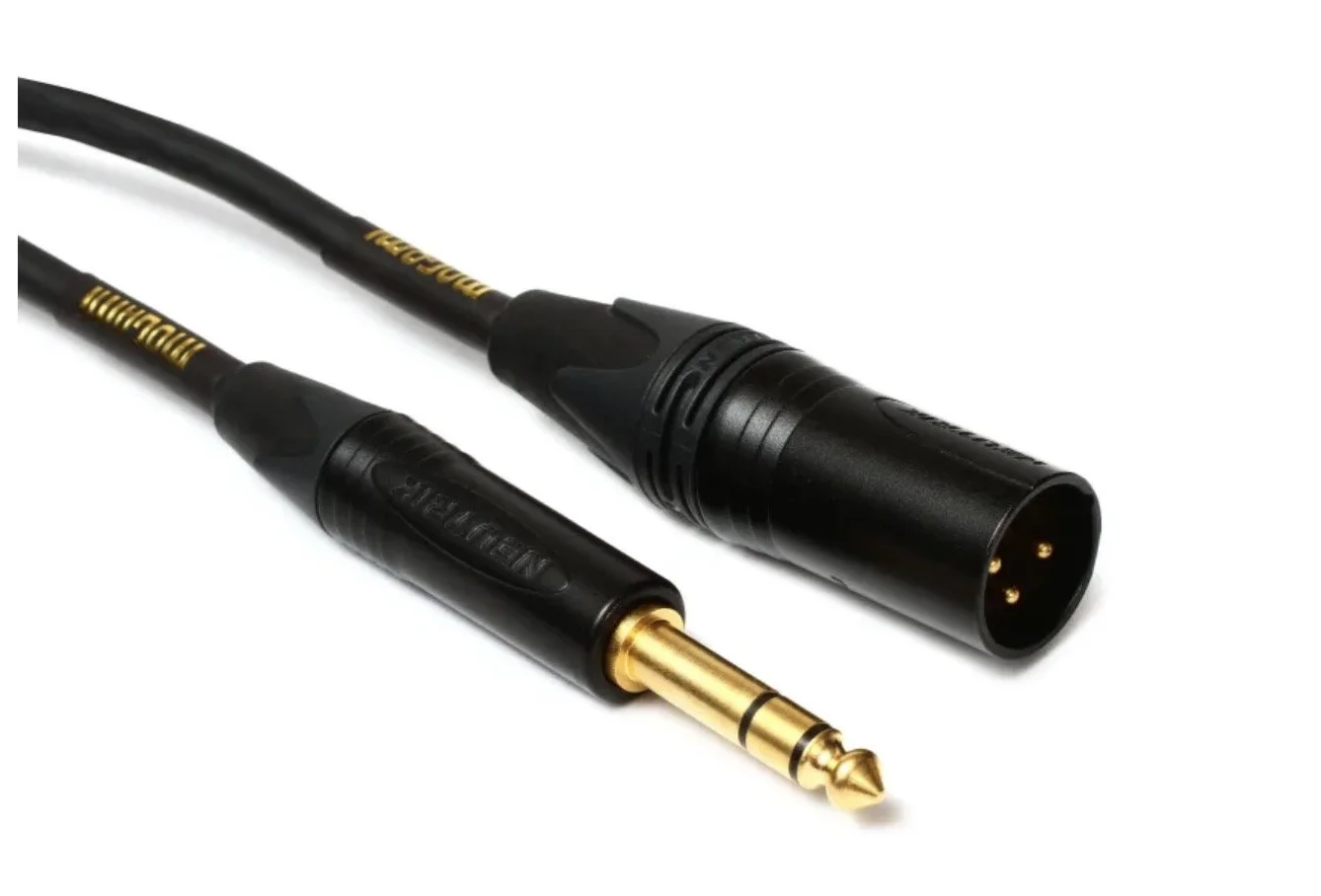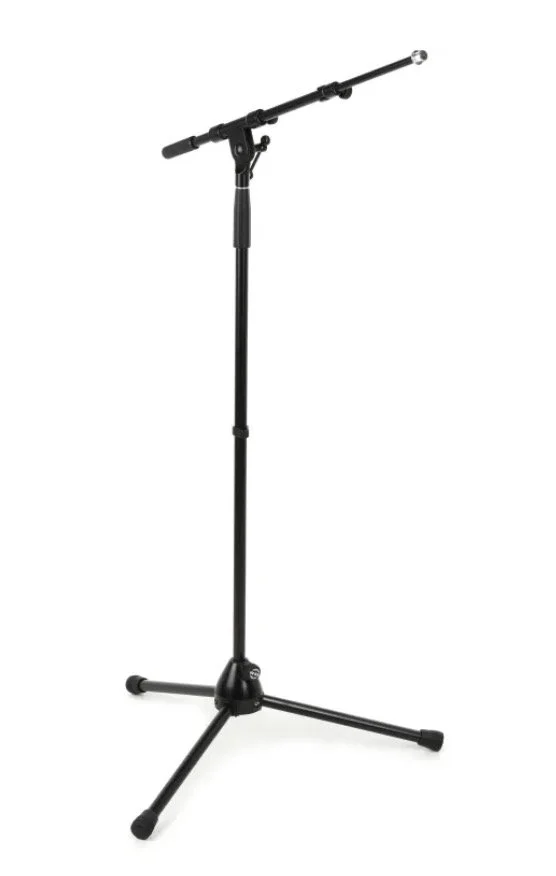Building a home music studio for $2,500
Let’s build another home music studio! Now that we’ve got a bigger budget, we’ve unlocked getting into the professional arena, and we can start working with real studio monitors. No more working only on headphones!
You might have noticed, there’s a significant price gap in the market here: this build has a $2,500 budget, but the next level down on my various home studio buildouts is all the way at the sub-$750 level.
That’s actually a deliberate aim point for consumer/prosumer musical gear manufacturers. Most casual hobbyists aren’t willing to spend more than $1,000 on a hobby that they don’t know if they’ll continue with long-term.
So, if you’re thinking of making the jump up to this kind of a price level, you’re hopefully interested in taking things a bit further than most do. Maybe you’ll be using your self-recorded tracks made at home in a more professional setting, perhaps by bringing them into a professional studio later on for further development. Or, you might be getting more serious about the recording arts, and considering developing your casual writing space into a professional studio space, to be operated as a business that generates income.
The Home Studio Gear Guide is another resource to reference, for all of my recommended home studio gear choices all in one place.
Our final budget
Here’s the final gear list for this build; we’re over budget by $9, a negligible amount which you could correct by going slightly cheaper on your speaker cables, downgrading a bit from the highest-end Mogami option that I’ve chosen here. Read on for more details on why I decided to go more expensive on those cables, in this particular case.
Audio Interfaces
SSL 2+ MKII USB Audio Interface: $300
Monitoring
Audio-Technica ATH-M50x Closed-Back Studio Monitoring Headphones: $149
ADAM Audio TV7 7’’ Powered Studio Monitors: $500
Microphones
Electro-Voice RE-20: $449
Rode NT2000 Large-Diaphragm Condenser Microphone: $600
Cabling
Mogami Gold TRSXLRM-15 Balanced 1/4-inch TRS Male to XLR Male Patch Cable - 15 foot x2: $160
Pro Co EVLMCN-15 Evolution Microphone Cable - 15 foot x2: $78
Stands
Behringer SM5002 Heavy-Duty Height-Adjustable Monitor Stand Set: $69
K&M 210/9 Telescoping Boom Microphone Stand: $102
K&M 25950 Extra Low Profile Tripod Base Boom Mic Stand: $102
Total: $2509
Design assumptions
For this build, I’m aiming for a 2-channel recording setup that will let you record the most commonly used instruments for writing music, at a professional level of quality.
Unfortunately, at this budget level we still haven’t unlocked the ability to record multi-tracked studio quality drums: that requires even more recording channels, more microphones, and more acoustics work inside of our space.
But, always remember that, in a home music writing situation, you don’t actually need to use mics on every single drum. Using this setup, you could throw two mics in front of your drum kit, record scratch drums, use those parts to finish your songwriting, and then fill in the scratch drum parts with overdubs done later on, at a professional facility. This would be a very cost-effective approach to writing your music, while still achieving a very professional-sounding end result.
Audio Interfaces
SSL 2+ MKII USB Audio Interface ($300)
A perennial recommendation, this interface is one of the best home studio bangs for the buck out there. You get two very high-quality recording channels with tons of clean gain, and one of my favorite features is the duel headphone outputs built right in. This makes it very easy to run two-person collaborative sessions working together in headphones, without having to buy a separate headphone amplifier and all of the associated cabling.
The SSL2+ MKII audio interface.
Speakers
ADAM Audio TV7 7’’ Powered Studio Monitors
The ADAM audio brand of powered studio monitors offers a highly affordable entry point into the professional-quality studio monitoring space. They’re a good place to get started with real studio speakers, provided their folded tweeter design works for you. This brand also tends to hold its value over time, making it easier to upgrade later on down the line.
If you have a little bit more to spend I often prefer Genelec monitors to the ADAM brand. But, for a most affordable entry point that balances quality with price, the ADAMs are a very solid selection here.
The ADAM Audio TV7 7’’ Powered Studio Monitors.
Headphones
Audio-Technica ATH-M50x Closed-Back Studio Monitoring Headphones ($149)
A solid pro studio classic, the ATH-M50 series of headphones made the list because of their versatility. These are closed-back headphones, which seal around your ears and make it less likely that headphone bleed will make it onto your recordings. This model is a bit more accurate than is typical for closed-back designs, making them valuable as a reference for light mixing tasks as well.
The Audio-Technica M-50X headphones.
Microphones
Because we’re only filling out two recording channels, we can afford to go more professional with our microphone choices.
For a two-channel songwriting setup, the usual rules apply: we’re looking for one vocal-optimized mic, plus one instrument-optimized mic, but neither microphone can be too highly specialized in those areas.
I’ve chosen one dynamic mic and one condenser here for even more flexibility: both of these mics will work great on their own, but they’re also fantastic and complementary when paired together on a single source.
Electro-Voice RE-20 ($449)
The Electro-Voice RE20 microphone.
Another perennial recommendation, this broadcast quality dynamic mic can do so many things well. A classic for vocals and podcasting, also try it on bass cabs, bass drums, brass instruments, and the sound hole of an acoustic guitar. An easy-to-use, very high quality addition to any music studio. This is a weighty mic, so you may find a counter-weighted stand to be a good additional investment, especially if you’re reaching far out with a boom stand.
Rode NT2000 Large-Diaphragm Condenser Microphone ($600)
The Rode NT2000 microphone.
This is a very solid studio condenser microphone, chosen for its versatility and potential for creative experimentation with your home recording. You get three continuously variable polar patterns, from cardioid to figure 8 to omni, the ability to blend seamlessly between these different polar patterns (unusual), and a continuously variable hi-pass filter, and a continuously variable pad, all built right into the microphone. There’s a ton of different options to play around with here, and this mic sounds great no matter where you set the dials.
Cables
I’m a fan on spending just a little bit more on cables, when you can. Spending more can get you a longer-lasting, more durable cable and improve your day-to-day quality of life while recording.
Pro Co EVLMCN-15 Evolution Microphone Cable - 15 foot X 2 ($39 each)
In this case, I’m going for a mid-level brand pick for our microphone cables. Cables that are attached to mics will see heavier wear and tear over their lifetime. So, while we want a durable and high-quality cable to minimize shorting and buzzing, we also don't want something that would be prohibitively expensive when it inevitably comes time for replacement.
Mid-level XLR microphone cables.
Mogami Gold TRSXLRM-15 Balanced 1/4-inch TRS Male to XLR Male Patch Cable - 15 foot X 2 ($80 each)
Top-end Mogami TRS to XLR speaker cables.
For our speaker cables (used to connect our studio monitors to our audio interface) it makes more sense to go top-of-the-line. These particular cables will be tucked behind a desk most of their lives, left plugged in, and not subject to nearly as much daily wear and tear. So, in this case, if we spend more on the very best cables, we’ll get that money right back in time saved every day, and overall quality-of-life.
These fully pro cables will last for years or decades in a low-traffic environment. And, while we’re using them, we won’t have to worry about wasting time hunting down a buzzy cable short that ends up coming from our speaker system. In my opinion, the day-to-day time savings and peace of mind is worth the higher one-time cost, for any cables used in a behind-the-desk environment. The goal is to have to go behind your desk to fiddle with cables as little as possible, and spending a bit more can help achieve that.
Mic stands
Mic stands are another area where it pays off big in your daily quality-of-life, if you can afford a more professional option. K&M is the classic pro studio brand, and their stands can hold up to hours of daily use for many years. They also tend to sag a bit less than cheaper stands, which makes your daily recording life much easier.
For maximum flexibility and convenience when using just two recording channels, we’ll go with one standard taller boom stand, plus one shortie stand for easier amp micing, and easier instrument micing when performing in a seated position.
K&M 210/9 Telescoping Boom Microphone Stand ($102)
K&M 210/9 microphone stand.
K&M 25950 Extra Low Profile Tripod Base Boom Mic Stand ($102)
K&M 25950 low profile microphone stand.
Speaker stands
Quality of speaker stands is important, but as long as the stand is generally well built, sturdy and stable, and can easily support the weight of your chosen studio monitors, we don’t need to break the bank with this purchase at this budget level. This Behringer monitor stand option is certainly good enough for smaller near-field monitors like the Adam TV7s, and you can always upgrade their acoustics profile later on with speaker pads placed underneath each monitor.
Behringer SM5002 Heavy-Duty Height-Adjustable Monitor Stand Set ($69)
Studio monitor stand set.
Conclusions
Build complete! This is our first pro-level buildout, and should enable years of excellent sounding work for the songwriting hobbyist, or a very solid starting point to build on for those thinking of starting a professional career in the recording arts. This level of cost is certainly not for everybody, but if you’re committed and serious, this particular set of gear provides great value.
My complete series of home studio buildouts done at varying price points can be found here. If you’re moving up into the pro level, consider checking out my mixing-focused and drums-focused professional level buildouts as well.










